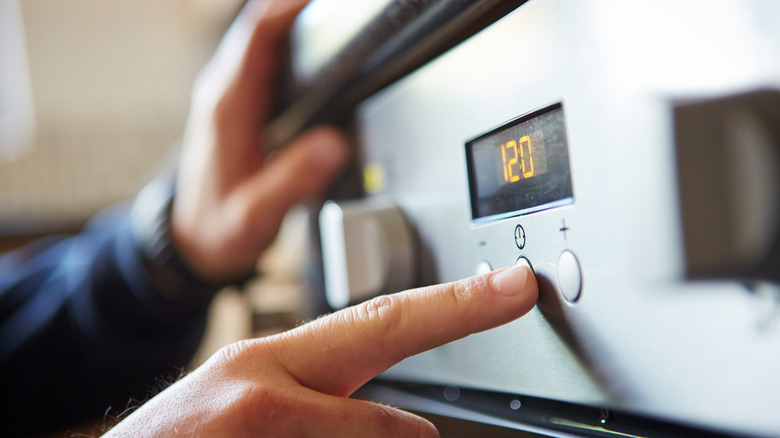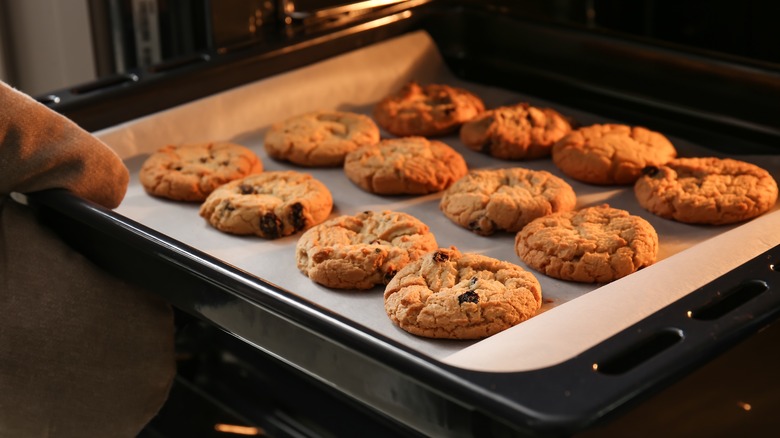The Types Of Dishes You Don't Actually Need To Preheat The Oven For
We've heard it a million times and seen it at the beginning of almost every baking recipe: You need to preheat your oven. But do you?
Contrary to popular belief, not every dish requires preheating. If you're reheating leftovers, the exact temperature isn't as important since your meat is already cooked. Also, some foods don't need a ton of heat from the get-go — sweet potatoes, mac and cheese, and baked beans all fall in this category because they cook better at lower temperatures for a longer period of time.
And some baked goods actually fare better when they start in a cold oven. Cookies and quick breads bake more evenly, while muffins and cakes may rise higher. Meanwhile, dense desserts like pound cake may also turn out better this way because their rising agent gets more time to do its thing, and air bubbles are allowed to form slowly. The key here is to check on your food occasionally since everyone's ovens are different and you'll need to adjust your baking time to account for the oven heating up.
When you should preheat the oven
For some foods, preheating can be an important step for a few key reasons: Without it, your food may bake unevenly, turn out with a subpar texture, or not be fully cooked, which can be a safety risk for meat and chicken. And when it comes to animal proteins, the longer they stay in room temperature air, the more they're in the danger zone for bacteria growth — so it's crucial to get them in the heat right away. Also, some baked goods need that immediate heat rush to maintain their structure, so if you're making biscuits, scones, or pizza crust, you'll need to preheat.
If you don't preheat, it may be a little more difficult to tell if your dish is done since most recipes won't give you a baking time for a cold oven. However, you can use your spidey senses to check for doneness: If you're just reheating leftovers, are they as warm as you'd like? Is the cheese on top melted and bubbly? The U.S. Department of Agriculture (USDA) recommends cooking leftovers until they reach an internal temperature of 165 degrees Fahrenheit, which you can use a food thermometer to verify. Even if you're not reheating, there are certain indicators to look for — sweet potatoes, for example, are ready to eat when their flesh is tender and yields easily to a fork or knife.

